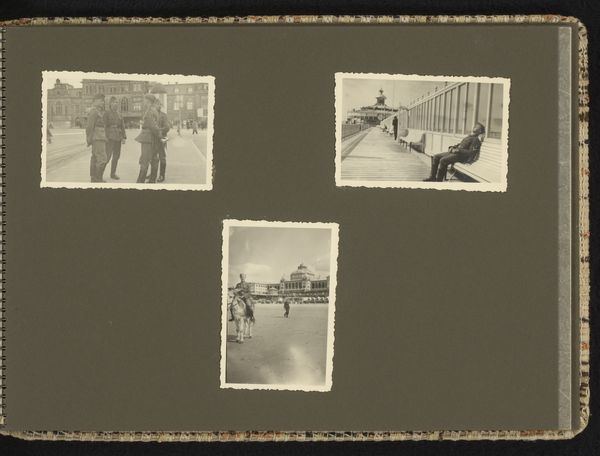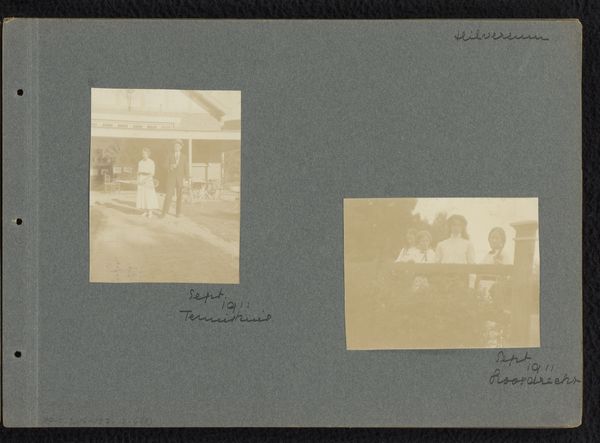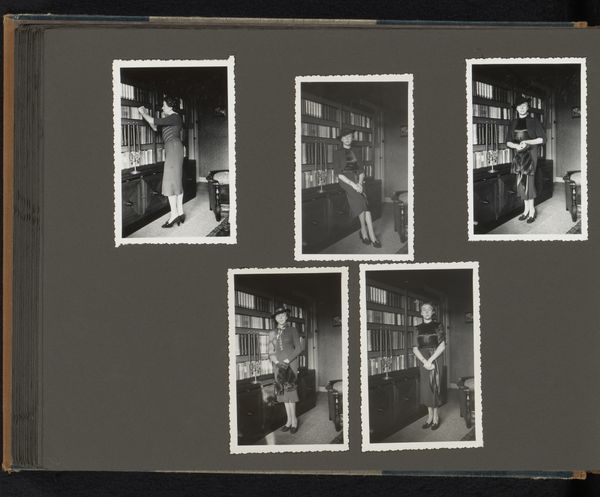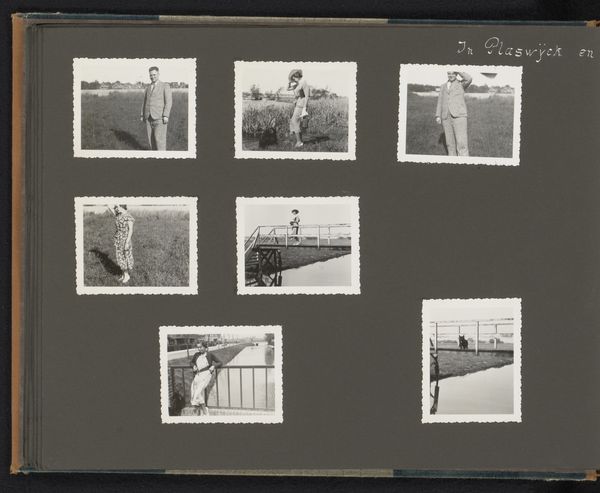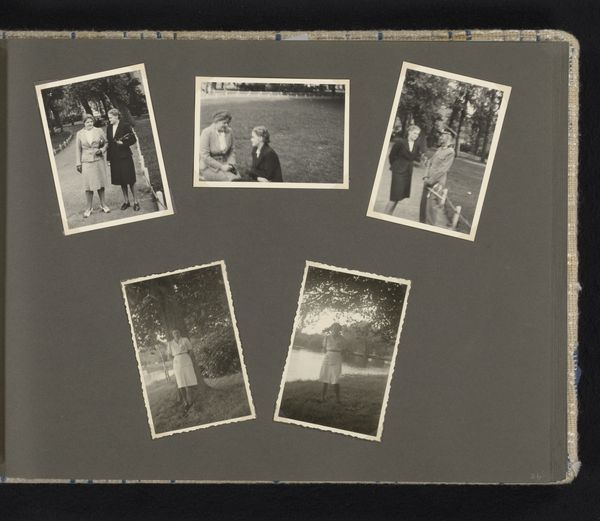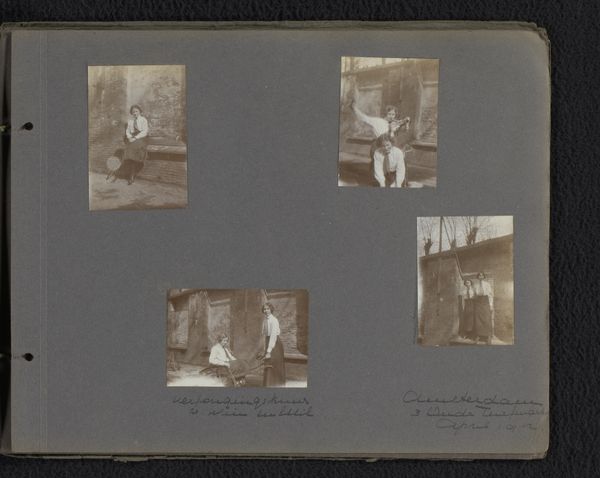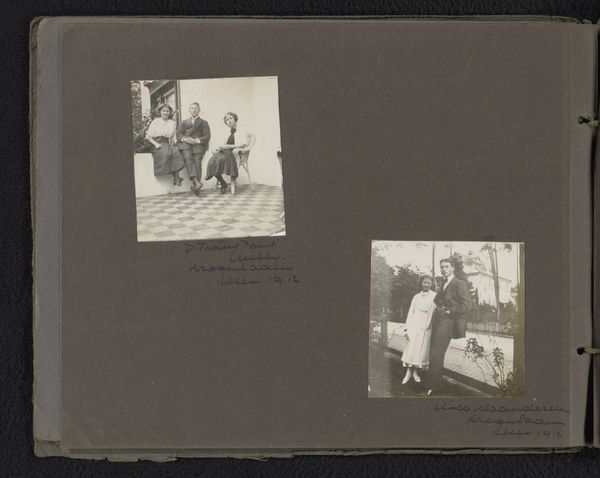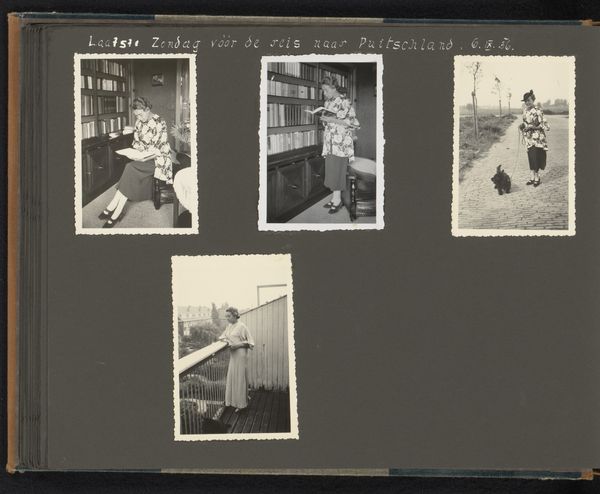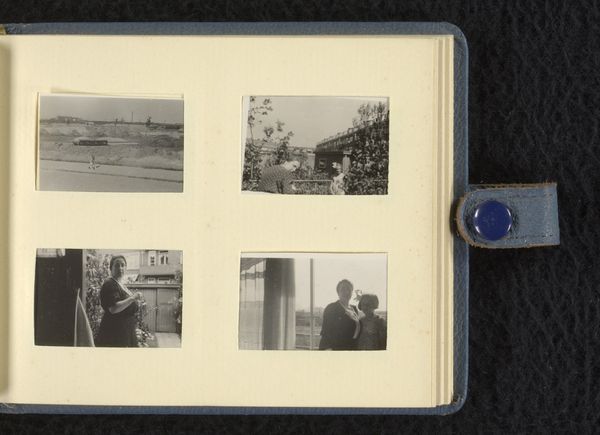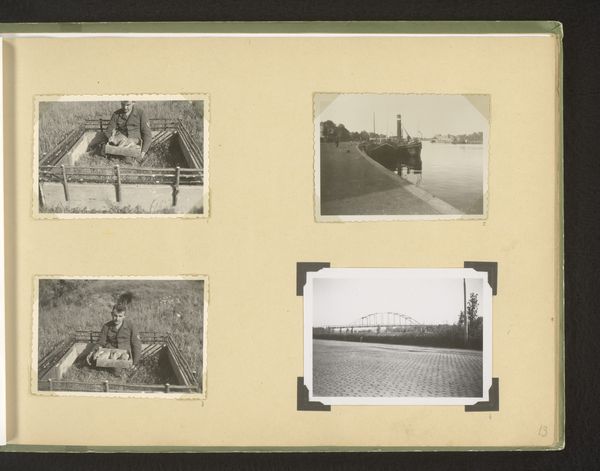
paper, photography, gelatin-silver-print
#
portrait
#
mother
#
paper
#
photography
#
gelatin-silver-print
#
genre-painting
#
paper medium
Dimensions: height 236 mm, width 310 mm
Copyright: Rijks Museum: Open Domain
Editor: Here we have Herman Besselaar's gelatin-silver print from 1933, titled "Berti Hoppe en haar moeder op de boot van Arnhem naar Nijmegen"—a snapshot of a mother and daughter traveling by boat. The stark black and white tones give it such a vintage feel, almost nostalgic. What do you see in this piece, looking beyond the surface? Curator: I see a potent tableau of familial legacy and displacement. Note the repetitive visual motif of the boat, appearing in a sequence; this repetition signifies a journey, both literal and perhaps metaphorical. The images suggest the women, possibly refugees or travelers in a pre-war Europe on the brink of transformation, experiencing life adrift and in-transit. What strikes you about their positioning in each frame? Editor: I see what you mean, the composition tells a story. The first image shows them together, more connected, whereas in the other two, they’re isolated, almost contemplative. It is poignant. Does the medium - gelatin silver print - add to the meaning for you? Curator: Absolutely. The use of photography as a medium, especially in the 1930s, lends an air of authenticity. Photos were becoming powerful mnemonic devices. Each frame is a visual record but imbued with layers of emotion – hope, uncertainty, and perhaps a quiet strength inherited through generations. The image becomes less a depiction of a boat ride and more a symbolic voyage. What feeling remains with you? Editor: Definitely the bittersweet sense of memory and transience that you pointed out. There's so much packed into these small frames! Curator: Precisely! It’s the beauty of symbols, isn’t it? Seemingly simple images hold vast narratives within, echoing through history.
Comments
No comments
Be the first to comment and join the conversation on the ultimate creative platform.
